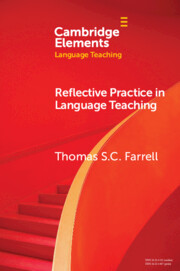Element contents
Reflective Practice in Language Teaching
Published online by Cambridge University Press: 22 April 2022
Summary
- Type
- Element
- Information
- Series: Elements in Language TeachingOnline ISBN: 9781009028783Publisher: Cambridge University PressPrint publication: 19 May 2022
References
- 44
- Cited by

